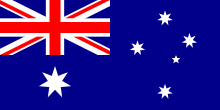France
France, in Western Europe, encompasses medieval and port cities, tranquil villages, mountains and Mediterranean beaches. Paris, its capital, is known worldwide for its couture fashion houses, classical art museums including the Louvre and monuments like the Eiffel Tower. The country is also renowned for its sophisticated cuisine and its wines. Lascaux’s ancient cave drawings, Lyon’s Roman theater and the immense Palace of Versailles are testaments to its long history.France covers the area of 549 000 sq km. France borders on Belgium, Luxembourg, Germany, Switzerland, Italy and Spain. Overall France has one of the most temperate climates in the world, but owing to the size of the country and the different altitudes, climate can vary considerably from one region to another. Mountain areas throughout France have heavy snows in winter. Population in France is 59.6 million. It is ranked as the world's ninth largest and the EU's second largest economy by purchasing power parity. According to the World Trade Organization (WTO), in 2009 France was the world's sixth largest exporter and the fourth largest importer of manufactured goods.










